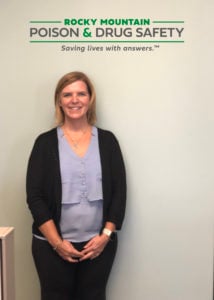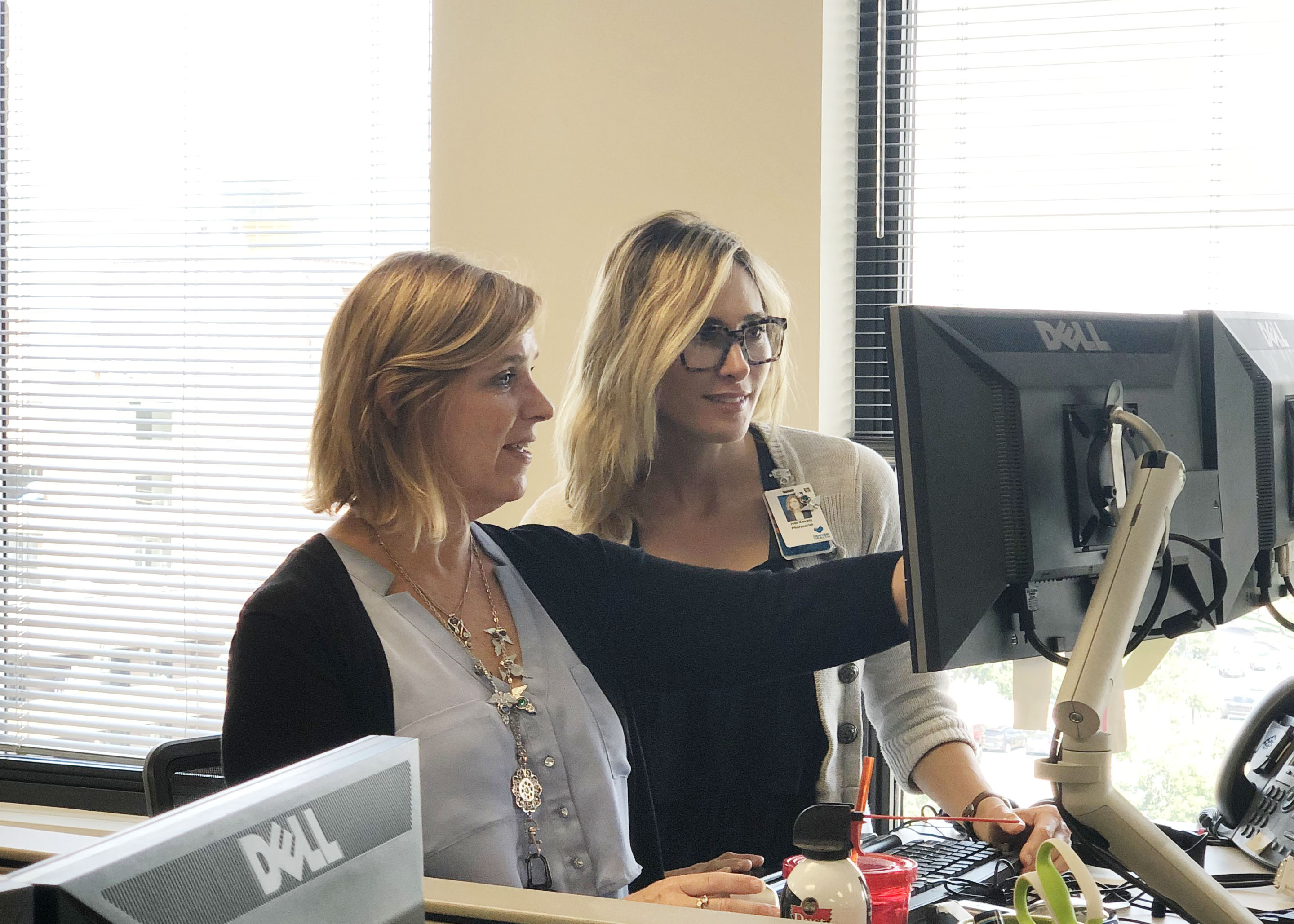Monica Zorman was a high school teacher in Georgia when a student asked her what careers he could pursue in chemistry. It wasn’t the first time she was asked this question, and she knew pharmacy was a solid option for students interested in science.
This time, though, she took a deeper look into the profession, looking for what the student would need to get started in the field. As she researched, she started to realize that pharmacy might make a good fit for her, too.
With a background in chemistry and business, Zorman saw all the ways she was already set up to study pharmacy.
She liked what she saw so much that just two years later, she enrolled at the University of Colorado Skaggs School of Pharmacy and Pharmaceutical Sciences.
Dr. Zorman graduated from CU Pharmacy in 2012, and now works as a Drug Information Pharmacist at Rocky Mountain Poison & Drug Safety, a department within Denver Health, where her team provides contact center communication related to medical information and safety reporting on behalf of pharmaceutical companies.
It’s safe to say Zorman’s research into pharmacy at her teaching job had a big impact: The high school student who asked her about careers in chemistry graduated from a different school of pharmacy the same year. He currently works in a community pharmacy setting.
“He was kind of an inspiration,” she said. “I’m still in touch with that student here and there.”
For Zorman, exploration into career paths didn’t stop once she decided to study pharmacy. In fact, after she graduated, she began to realize that she wanted to take a nontraditional path again. Instead of pursuing pharmacy in a retail setting or at a hospital like many of her peers, she wanted to work more with medication safety.
As part of her work with Rocky Mountain Poison & Drug Safety, Zorman’s job is to provide patients and healthcare providers with information and data on medications. Working closely with pharmaceutical companies, Zorman creates standard response letters (SRLs) and frequently asked questions (FAQs) based on data from prospective clinical trials, retrospective analysis, case reports and occasionally the company’s internal data on file. These SRLs and FAQs are utilized by the drug information team while discussing clinical data with the healthcare providers. The letters are designed to provide balanced and unbiased responses, tailored to a specific unsolicited inquiry.
 Monica Zorman, PharmD, is a Drug Information Pharmacist at Rocky Mountain Poison & Drug Safety. Photo Provided by Rocky Mountain Poison & Drug Safety
Monica Zorman, PharmD, is a Drug Information Pharmacist at Rocky Mountain Poison & Drug Safety. Photo Provided by Rocky Mountain Poison & Drug Safety
On a daily basis, Zorman and her colleagues also monitor dozens of email inboxes and field phone calls about medications from patients and healthcare professionals. The drug information team answers questions about pharmaceutical drugs, as well as over the counter medications. During these conversations, Zorman captures the patient’s experience, carefully listening for any potential adverse events. After the call, this information is provided to the pharmaceutical company, who then reports it to the Food and Drug Administration (FDA).
If, for instance, a patient reveals that his appendix was removed in a conversation, Zorman will ask questions to find out if the appendix removal happened before or after he started taking a medication.
“Then, we get a picture: could this drug possibly affect the appendix?” That’s our role, get as much information as we can,” she said. “We look at the whole picture to identify adverse reactions, some that are expected, others that are serious and unexpected.”
If enough patients report issues with the appendix, starting after taking the medication, and these adverse reactions were not provided in the prescribing information (PI), the pharmaceutical company would then be required by the FDA to add that information to the drug information packet that comes with every prescription. The updated information is also sent to doctors.
“The whole job we do is to find that side effect or adverse effect that was not identified in the trials,” Zorman said. “Clinical studies can have a small number of participants. Now you’ve opened it up to the whole entire world, and the population.”
Years after her teaching job in Georgia, Zorman still has her eyes on influencing students thinking about pharmacy. She is currently looking for ways to involve early career pharmacists in drug information at Rocky Mountain Poison & Drug Safety, potentially by hosting rotations there in the future.
Zorman said she hopes other students seeking nontraditional paths in pharmacy think about drug information as a career path.
“(When I was a student), I didn’t really realize that there was a big area in drug information,” she said. “What I would like to see is more visibility in this area of work.”
